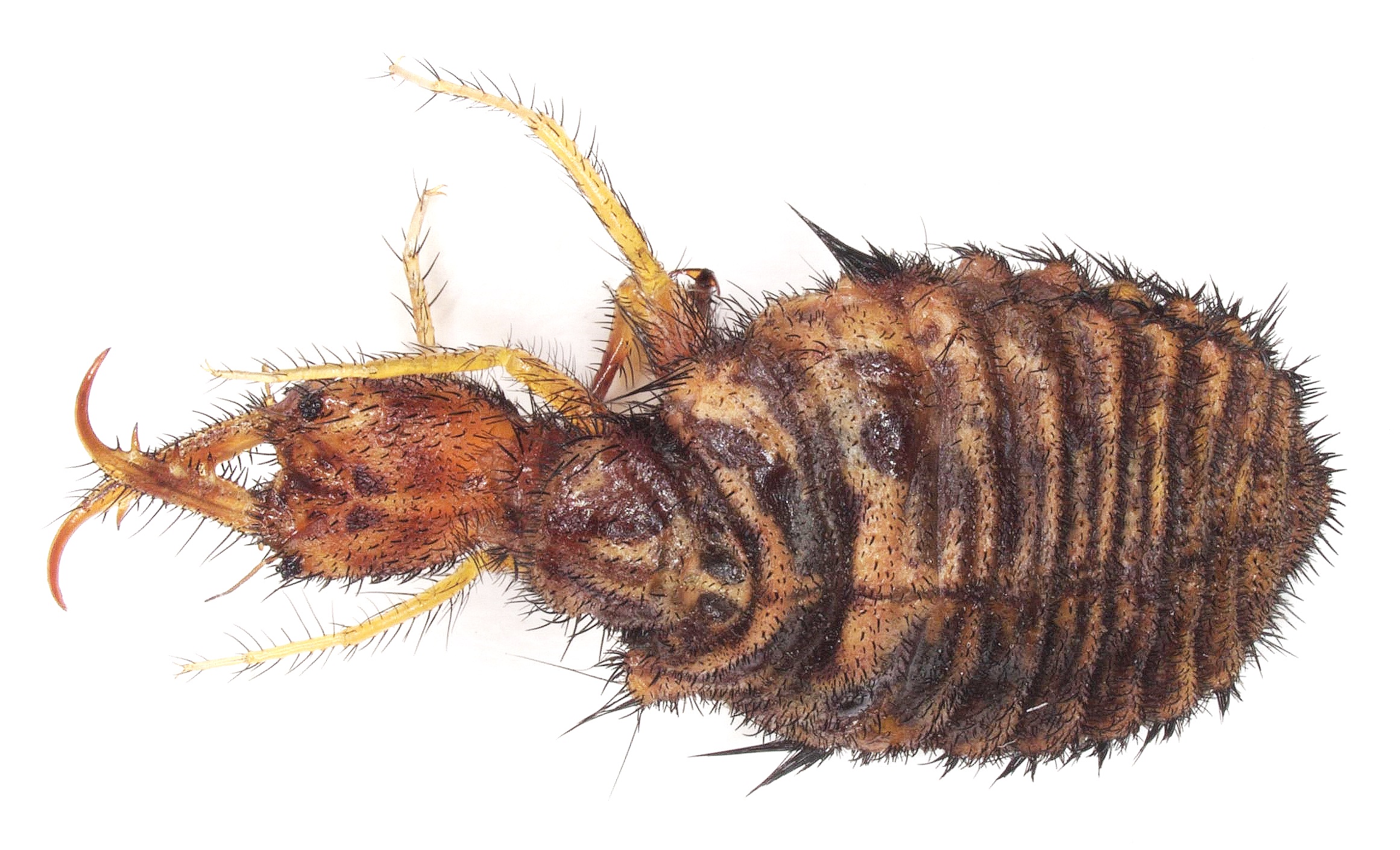Our Treasure of the Month: The Larva of the Antlion

Also known as the ant lion in its larval form: Our treasure of the month. © LIB, W. Krings
When the Antlion flutters through our gardens, it has already lived most of its life. Before it spends just a few days in its adult form flying around to mate, it lives about two years in its larval stage – commonly known as the Antlion. What makes this treasure so valuable to our researchers is the unique structure of its jaws, which they have closely examined in a recent study.
Antlions are ambush predators that wait in their funnel-shaped sand pits for the right moment to capture their prey. If an ant, for example, comes too close to this sand pit, it will be bombarded with sand by the Antlion, causing it to lose its footing and slide down to the bottom of the pit. Here, our treasure waits with its relatively enormous jaws to capture its meal.
The mouthparts of these approximately 1.5 cm long insects consist of two different structures: mandibles and maxillae. These lie on top of each other and have distinct roles in hunting. The mandibles are designed for gripping and piercing the exoskeletons of insects, while our treasure uses the maxillae to inject venom and enzymes into its prey and later suck it out from the inside.
Wencke Krings, an associate researcher at the LIB, was particularly fascinated by the hardness of the mandible tips: “With the help of laser microscopy, we were able to determine the metal content in the larva’s jaws, as a higher concentration of metals results in a stronger material.” The researchers noticed a significant difference between the mandibles and maxillae in our treasure of the month: while the mandible tip is very hard and rigid, the tip of the maxilla is soft and flexible. When pressure is applied to the jaw, for instance, when gripping prey, the maxilla opens, allowing either the release of venom and enzymes or the intake of food.
To measure the mechanical properties of the jaws, pressure was applied to see how much force they could withstand and how easily they could penetrate typical prey. The team also found a connection between the hardness of the mouthparts and the chitin composition of the jaws. Krings believes that the hardness of the mouthparts depends on the metals they contain.
The study was recently awarded the Reinhard Rieger Award 2024 by the journal Zoomorphology. This award is given annually to a study from the journal that stands out for its particularly integrative or comparative methodology. In addition to a cash prize, the research team also has the opportunity to select an image for the journal’s cover. We can reveal that our treasure of the month will feature its impressive jaws on the cover.





